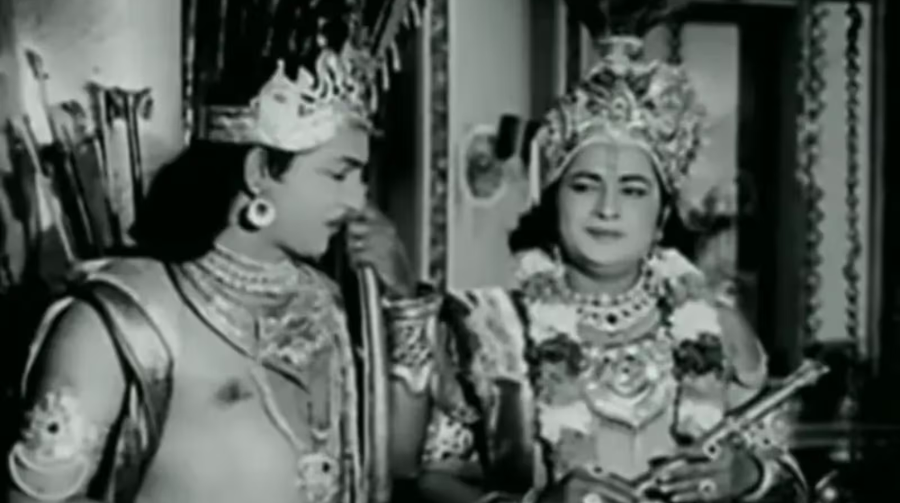Bollywood
Who Was the First Actor to Play Lord Krishna on Screen?
Lord Krishna remains one of the most cherished figures in Hindu mythology — a symbol of wisdom, love, mischief, and divinity. From epic texts like the Mahabharata and Bhagavata Purana, Krishna has found his way into every art form: painting, dance, theater, and eventually cinema. With Indian cinema itself born in mythological roots, it was only natural that Lord Krishna became one of the earliest gods to be portrayed on screen.
But who exactly was the first actor to play Krishna on film? To answer this, we need to revisit the early days of Indian cinema, starting with Dadasaheb Phalke, the father of Indian films.

Mythology and the Birth of Indian Cinema
In 1913, Phalke released “Raja Harishchandra,” the first full-length Indian feature film. Its success encouraged more filmmakers to adapt mythological tales, as audiences were deeply connected with epics and Puranas.
Unlike modern cinema, where romance and action dominate, early Indian films were almost entirely based on gods, saints, and epics. This was because religious and mythological narratives were not only entertaining but also socially acceptable for audiences who were still adjusting to the new medium of film.
The First Screen Krishna: Silent Era (1918–1920s)
The earliest depiction of Lord Krishna came in Phalke’s silent films. Two key movies stand out:
- Krishna Janma (1918) – Focused on the birth of Krishna.
- Kaliya Mardan (1919) – Showcased child Krishna’s legendary victory over the serpent Kaliya.
In a fascinating twist, Phalke cast his own daughter, Mandakini Phalke, as child Krishna in “Kaliya Mardan.” She is, therefore, recognized as the first actor to play Krishna on screen — though as a child.
When it comes to adult portrayals, credit goes to Dattatraya Damodar Dabke, who worked closely with Phalke and acted in his mythological productions. Dabke is remembered as the first adult male actor to embody Krishna on screen.
Expanding Krishna’s Cinematic Journey
After the silent era, the 1920s and 1930s saw the rise of talkies (sound films), which further amplified Krishna’s presence on screen. Films such as:
- Nand Kumar (1921)
- Gopal Krishna (1929)
- Krishna Bhakti (1935)
helped solidify Krishna’s role as not just a religious character but also a cinematic hero. These films typically depicted his childhood pranks, Rasleela in Vrindavan, and battles against demons.
Krishna in the Early Talkie Era (1930s–1950s)
With the introduction of sound in Indian cinema, mythological films became even more popular. Krishna’s character could now deliver dialogues, recite verses, and perform bhajans — giving audiences a more immersive devotional experience.
Some notable portrayals during this era included:
- P. G. Sane in Gopal Krishna (1929).
- Ranjan in Krishna Bhakta Sudama (1947).
- Abhi Bhattacharya as Krishna in Mahabharat (1965) — a performance that became a benchmark for cinematic portrayals.
Krishna on Television: A Game-Changer (1980s–1990s)
While films kept Krishna alive, it was television that turned him into a household deity in India.
- B. R. Chopra’s Mahabharat (1988) featured Sarvadaman Banerjee as Krishna. His calm, philosophical portrayal, especially during the Bhagavad Gita sequence, remains iconic.
- Ramanand Sagar’s Shri Krishna (1993) cast Swapnil Joshi (as teenage Krishna) and Sarvadaman Banerjee (as adult Krishna). The show ran for years and was re-telecast during the COVID-19 lockdown, gaining a new wave of popularity.
Television made Krishna more accessible, bringing mythological stories to millions of living rooms across India.
Modern Era and Global Adaptations
Today, Krishna continues to appear on OTT platforms, animated films, and global productions. Animated features like Krishna: Makhan Chor and Little Krishna introduced the deity to children in a fresh, playful format.
Modern actors occasionally revisit Krishna in devotional films or stage productions, but none forget the legacy of the first pioneers from Phalke’s era.
Why Krishna Was an Early Cinematic Choice
Krishna’s early popularity in films was no coincidence. Several reasons explain this:
- Cultural Familiarity – Audiences already loved Krishna’s stories.
- Visual Appeal – Stories of miracles, demons, and divine acts translated well on screen.
- Devotional Connect – Watching Krishna on screen felt like an act of worship for many viewers.
- Political Symbolism – In colonial India, mythological films carried subtle messages of resistance and nationalism.
Timeline of Krishna on Screen
- 1918 – Krishna Janma (first Krishna film, silent era).
- 1919 – Kaliya Mardan – Mandakini Phalke as child Krishna.
- 1929 – Gopal Krishna – adult Krishna in talkies.
- 1947 – Krishna Bhakta Sudama – Krishna’s bond with Sudama portrayed.
- 1965 – Mahabharat film starring Abhi Bhattacharya as Krishna.
- 1988 – B. R. Chopra’s Mahabharat with Sarvadaman Banerjee.
- 1993–1996 – Ramanand Sagar’s Shri Krishna TV series.